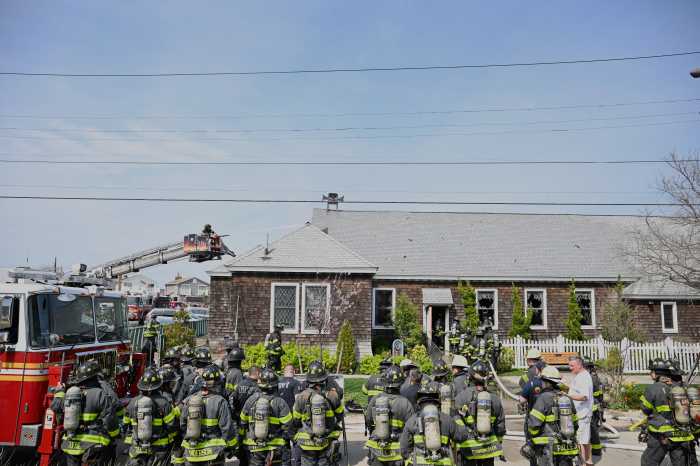In a major victory for the Hauppauge Industrial Association—which oversees a 1,400-acre business-hub industrial park that is home to more than 1,300 companies—the Smithtown Town Board voted earlier this month to establish a new zoning district that will give the facility greater flexibility to handle its own development.
“The new zoning rules will promote investment among our business members, allowing them to expand,” says Terri Alessi-Miceli, president of the HIA.
The adoption of the zoning overlay district arrives on the heels of another HIA project, one aimed to improve the industrial park’s 30-year-old sewer system. Begun in 2013, the sewer system expansion project aims to increase daily capacity from 600,000 gallons to over 1.5 million gallons, which would add capacity for commercial expansion.
One of the largest industrial parks in the nation, the Hauppauge Industrial Park comprises more than 60 percent of the companies in the HIA, with more than 55,000 people employed in construction, manufacturing and service industries, according to its president. Among the corporate offices in the park are the Coca Cola Company, consumer electronics producer Audiovox, satellite-communications company Globecomm, and Allstate.
According to Alessi-Miceli, who declined to give a total amount, the HIA has worked with the Suffolk County Industrial Development Agency to provide its members millions of dollars in property tax abatements and sales tax exemptions in order to help the companies complete their investment projects and expand their sales operations.
The new zoning rule could pave the way for an increase in growth, says Alessi-Miceli. Building heights that are currently limited at 35 feet could now rise to 50 feet, a 43 percent increase. The new allowance could let existing business members add more office space or create room for new businesses to set up in the park. The growth does not stop there. Buildings along Vanderbilt Motor Parkway received an extra boost to hit 62 feet. The zoning legislation also allows for increased outdoor storage and the installment of two-story parking garages, which the HIA claims will help its members organize their businesses better and get to work faster.
Accommodating new companies vertically, rather than horizontally, could also alleviate the severe traffic congestion, which Alessi-Miceli acknowledged was the biggest problem facing the park in 2009 when she spoke with the Long Island Business News. Six years later, the HIA is still trying to help improve its members’ productivity and the park’s mobility.
The overlay district vote was temporarily delayed by a request from HBO. Its communications center is stationed in the Hauppauge Industrial Park, and its executives expressed concerns that heightened buildings could have potentially interfered with HBO’s satellite transmissions to its millions of subscribers worldwide. But upon further investigation, HBO found no cause for worry, and the Smithtown zoning vote went underway.
The new district could have a profound economic impact on the Town of Smithtown, which has jurisdiction over the main portion of the Hauppauge Industrial Park’s real estate. The park already is an asset for Smithtown’s economy; its land and buildings account for about 70 percent of the total assessed value of industrial property in Smithtown. According to the HIA, the industrial park currently generates over $19 million in annual tax revenue for the town. Easing building regulations could open up the door to additional tax revenue, as well as address the town’s inefficient handling of building-permits.
Over the last three years, the unemployment rate for Smithtown has been falling from its 20-year high of 7.2 percent in July 2012, according to the U.S. Bureau of Labor Statistics. The town’s unemployment rate stands at 4.2 percent as of June, well below New York’s state-wide average of 5.5 percent.
Further developments to the Hauppauge Industrial Park may put even more downward pressure on the town’s unemployment rate.
“More jobs can be created to fill the new office spaces and satisfy the need for additional services,” says Alessi-Miceli.
Whether all these zoning changes will make a difference remains to be seen but at least things at the park are looking up.

































